Today we will talk about how you can process cut parts cut without overlock.
After all, no matter how wonderful overclocking lines of good overlock were and, as it were, how cool and professionally did not look at the cuts treated by them, but, alas, not all sewing lovers have, such a necessary tool, in their sewing economy.
But it does not matter. Crow parts cuts can be treated without overlock. And ways to do it, a lot of people. So choose, I do not want.
When, why and how, you need to handle sections of the fabric?
Sections can be treated with the help of "resources" of other people.
To do this, you can seek help from friends, relatives or neighbors engaged in tailoring clothes for yourself and your family. And who have, in their "set" of tools for sewing, Overlock.
You can contact the workshop or the studio for sewing and repairing clothes. And there, for money, with pleasure, you will be treated with any sections and any overlock line.
Sections can not be processed at all.
Sections of parts made from nonwovens, such as leather and suede, natural and artificial, do not need to handle. They do not appear.
And working with woven materials, the details of the patterns can be decomposed so that the edges of the allowances, long and smooth cuts, coincide with the edges of the canvas, on which they are laid out. And then cuts, cutting parts cut, tailored along the edge, will not need to be processed.
But there is one but. A dense, the inflexible edge can be pulled by the made seam. Therefore, its edge must be laid with scissors to a depth of 0.5 - 0.7 cm, every 7 - 10 cm.
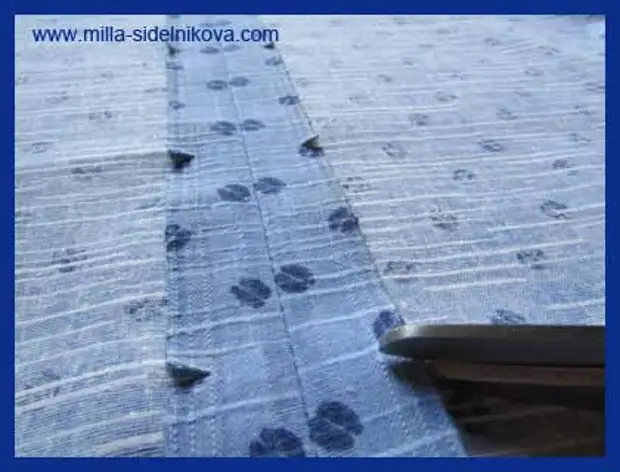
Processing of the cuts of their firing.
Modern textile canvases are very often containing, a number of impurities of artificial and synthetic fibers. The overwhelming majority of such fibers, when exposed to some very hot heat source, they are melted. This can take advantage and melted the cuts of cut parts, for example, a flame of a burning candle, lighters, etc.
Of course, you should first try to melt the slice on the unnecessary flap of the treated fabric.
And, by itself, of course, to act at the same time it is necessary to be extremely gently and carefully. In order not to stay not only without a manufactured sewing product, but also the house does not burn.
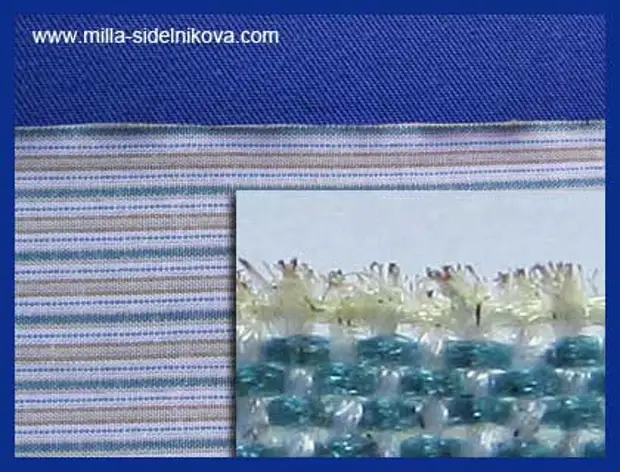
Of course, this method of treating cuts is very fast and quite reliable, but on some products it can be formed, unpleasant to the touch, hard, Rubber. So it is necessary to keep in mind planning such a processing method.
Cutting cuts with a special means.
The modern chemical industry has "reached" until the invention tools to prevent the manufacture of the product.
What is it and how does it work?
To start the sections need to be fired to be beautiful
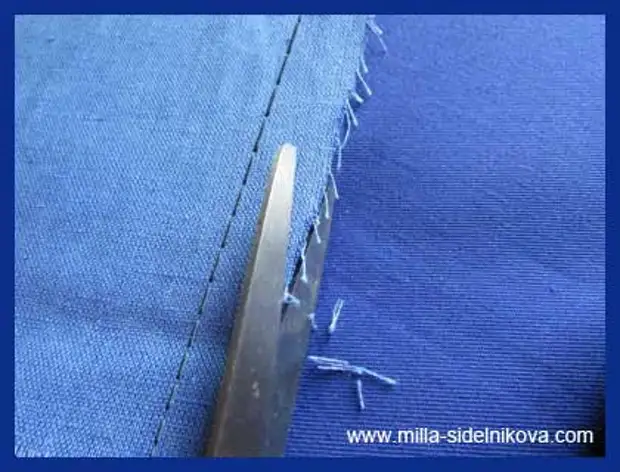
And put on them, this, colorless liquid - glue.
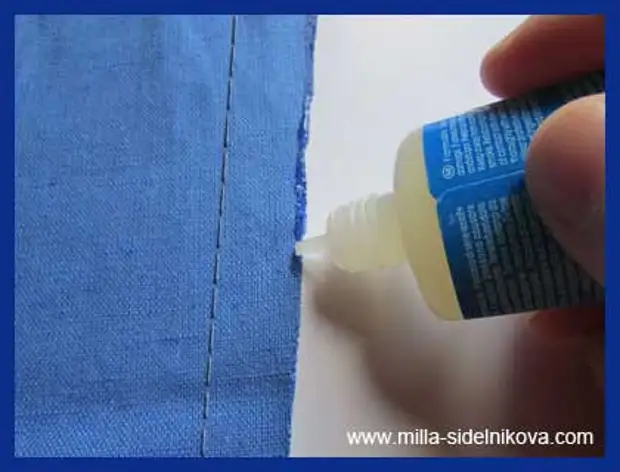
And when it dries, the fibers of the canvas are glued together and then they do not appear.
If you spend your fingers along the edge of the cut, it is felt that it has become tougher and even with a strong pressure on the thread, they continue, and very hard, hold together.
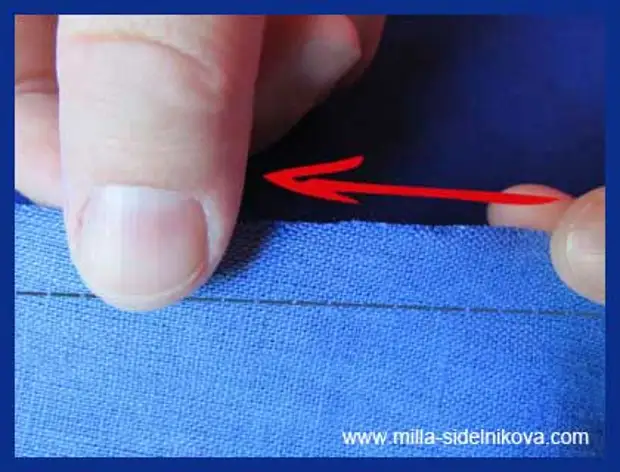
Special sections can be processed together or separately.
Treatment of cutting of teeth.
Separations of light fabrics, with a sufficiently dense weave of the threads of the canvas, can be treated from sprinkling with special fester scissors or zigzag scissors, with a cutting edge in the form of teeth.
In this way, you can handle the allowances
- barn seams rotory and
- seams in the bending with an open cut.
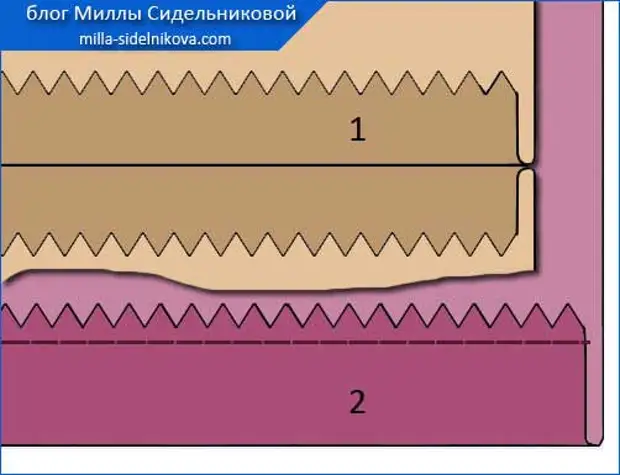
Well, of course, you need to try to treat the sections with scissors "Zigzag" so that the carved teeth are smooth, the same and located at equal distances from each other.
For reliability, before carving sections with cloths, on the allowances of the beds, at a distance of 0.5 cm from the edge of the cut, you can pave a conventional machine line.
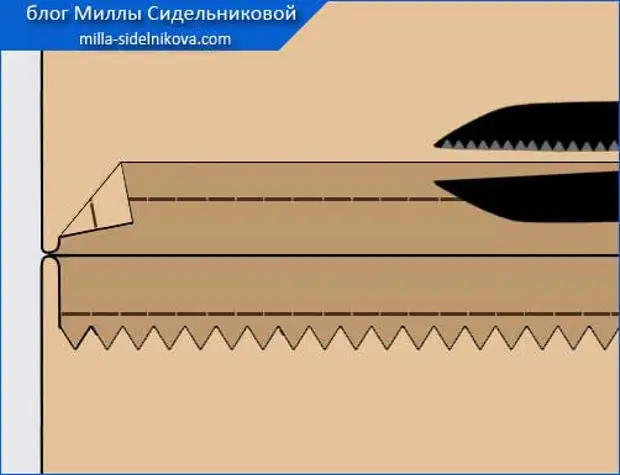
Treatment of sections Stitching Zig Zag.
Treatment of slices in a bending of an open cut.
Sections of bargains
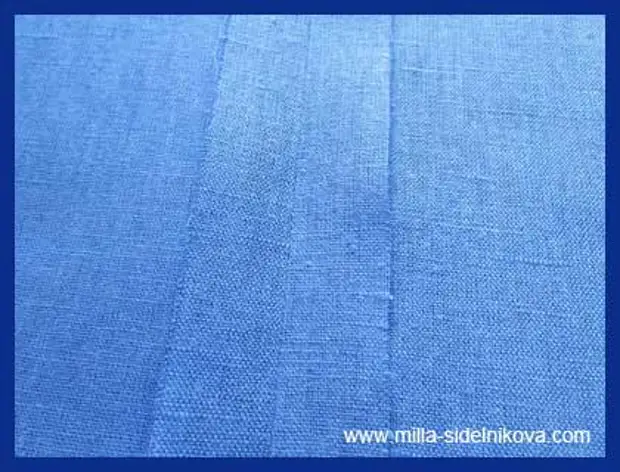
Can be processed by converting and submissive.
How is such a cutting processing?
Such sections need to be planned in advance. Because, in order to perform this type of cutting cutting, the seam allowed should be left to 2 to 2.5 cm.
If the sections are straight, then the line along the edge of the allowance, at a distance of 0.5 - 0.7 cm from the edge, you can not lay. In the case with a bit curved, convex or concave cuts, such a line must be paved.
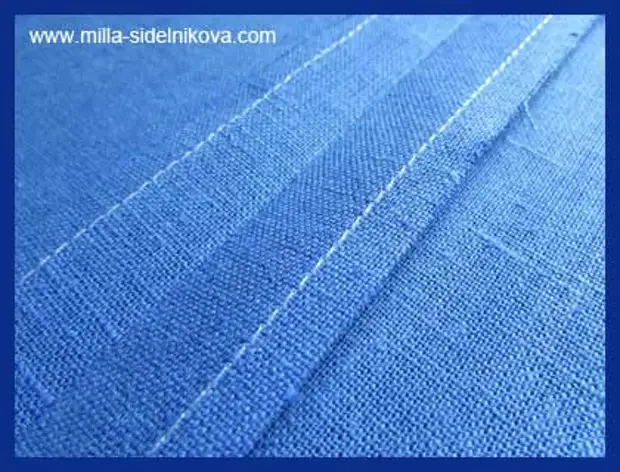
Then, on the line or if it is not, on the same, 0.5 - 0.7 cm, the distance from the edge, the cuts of the allowances are peeling to the wrong side, and along the edge, at a distance of 0.1 - 0.3 cm from it, paved line.
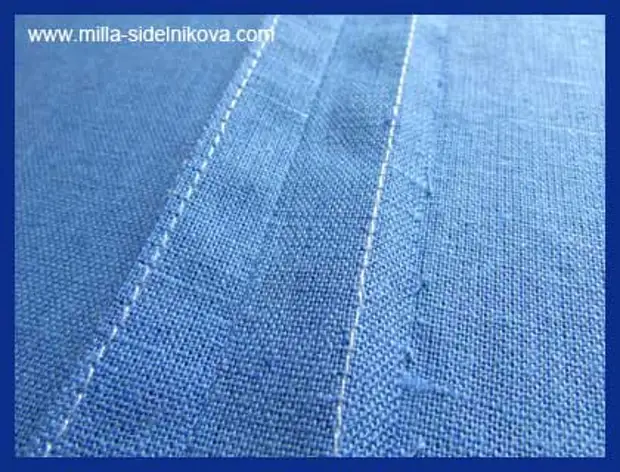
This method of treating slices is suitable for thin and medium tissues. But it is not at all suitable for transparent and thick tissues.
Despite the fact that the sections of the bending remain open, such a method for treating slices is quite effective. From the wrong side of the product, the sections look carefully, and the hard fold does not give them creep during washing.
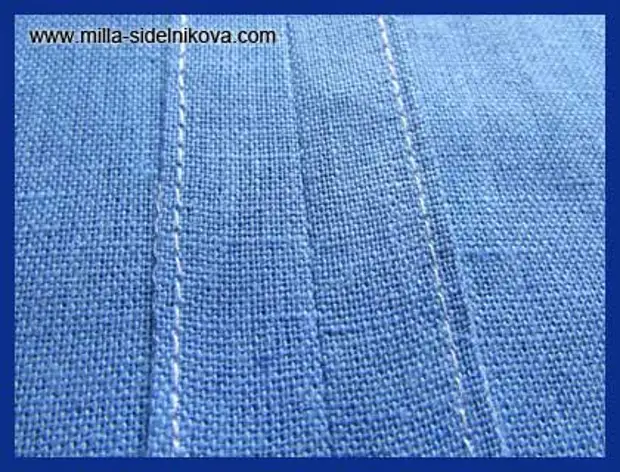
The most neat, after such treatment, the sections are obtained if they are processed before the seam is performed.
Processing sections edging.
Treatment of sections double seam (feeding, french).
Using a dual seam, it is a seam feeding or French, straight cuts cut parts, you can simultaneously connect and processed from sprinkling.
Cutting cuts with special lines of sewing machine.
Of course, different sewing machines have different sets of special lines in their arsenal. And each owner of the sewing machine is forced to navigate and use in work, it is the set of lines that is present on his personal sewing machine.
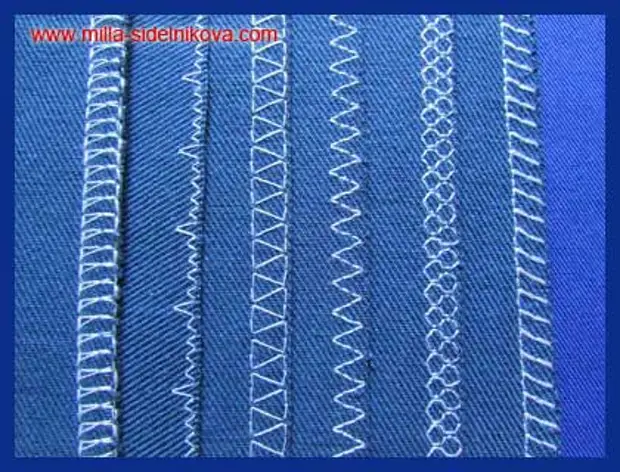
Special lines of the sewing machine can be processed, and separate sections, and stack and at the same time treat sections, gates and knitted materials.
And here will come to the rescue, high-quality and detailed, manual, existing in the set of tools to any decent sewing machine. It will "tell me", and how are those or other lines, and for what materials it is better to apply them.
Special lines of the sewing machine on sections of dense, heavy fabrics are particularly well.
And the most, neat and smooth, such lines will turn out if they are paved until the seam is performed.
But, alas, all the same, it is not overclocking lines. Therefore, in no dependence on whether they will be laid before performing a seam or after, in any case, so that such lines are not tightened by the edge of the cut, they must first be paved at some distance from the edge of the allowance,
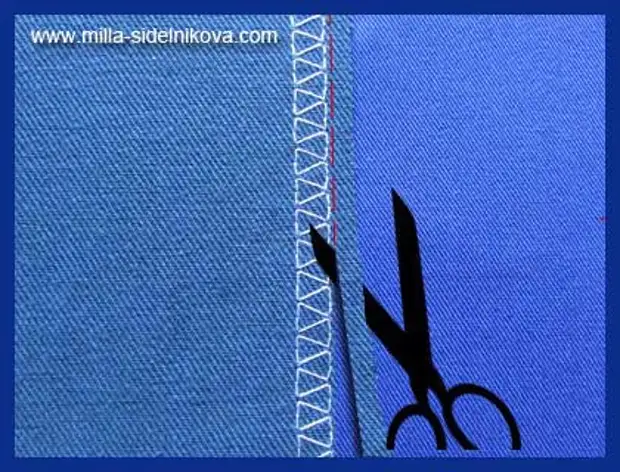
And then it is very good to trim his surplus, trying not to hurt in any way, scissors, threads lines.
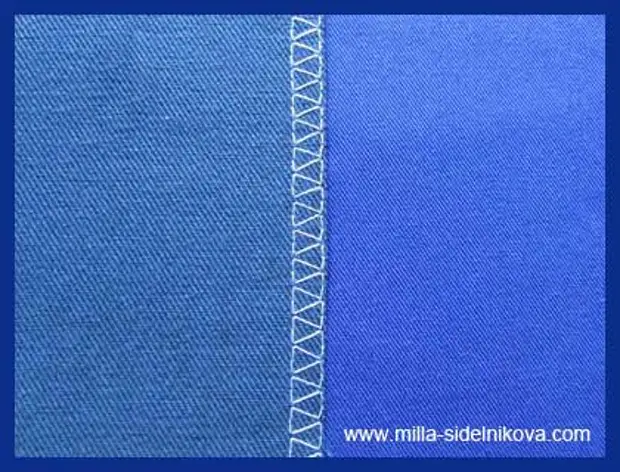
Treatment of sections with manual stammers.
Sections can be treated with manual stammers:
- oblique stitches;
- loopped;
- Cross-shaped.
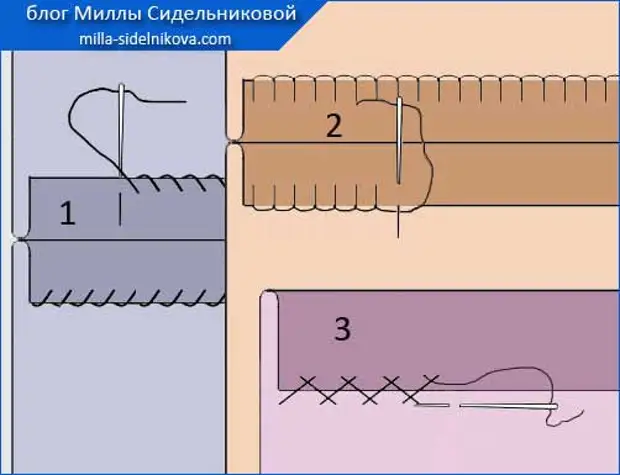
And so that the manual lines are neat and smooth, at a distance from the edge of the cut, so that the width is planned by the manual line, you can, weakening the tension of the upper thread, lay the machine line. And it will serve as a guideline, in order for the long stitch length of the manual line was the same.
And after the manual line is performed, the machine can be easily removed.
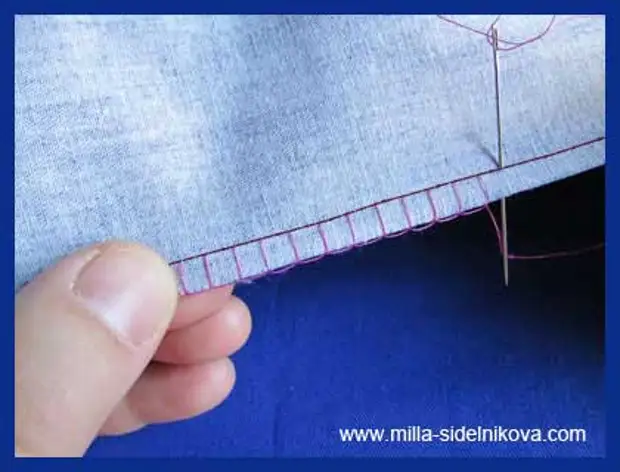
Yes, of course, process sections manually longer than on the same sewing machine or overlock. But if relaxing, with a calm heart, it is possible for this work with a calm heart, then you can under your favorite, not a voltage series, imperceptibly for myself, all sections of products, handle manually.
What? Neither a sewing machine, nor Overlock layout. Sing yourself calmly in front of the TV and lay the stitch behind the stitch. And you look and get involved, you will like it, and your hands will be, quickly and efficiently, to fulfill such work.
In addition, leisurely, carefully and as in the ruler, the laid hand stimples are attached, some, I would say, piquancy, product. They are nice to look at them, they please the eye.
As you can see, without Overlock, it is quite possible to do! And in other ways, the treatment of cuts, it will be no worse to hold the threads of filling slices.
Now let's get to know a closer look at the zigzag line, which I "presented" above in the article. But let's already in the next publication.
The author of Mila Sidelnikova.
A source
